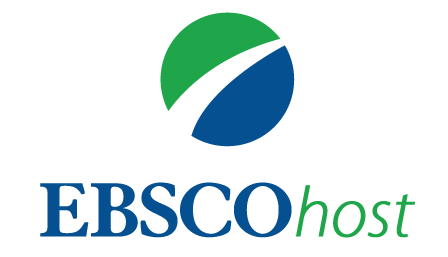LA EMERGÍA COMO MÉTODO DE VALORACIÓN QUE CONTRIBUYE A LOS PROCESOS BIOCONTABLES EN EL MARCO DE LA ECOCONTABILIDAD: UNA REVISIÓN LITERARIA
DOI:
https://doi.org/10.47847/faccea.v14n1a3Palabras clave:
Biocontabilidad, ecosistema, emergía, métodos de valoración, reconocimiento biocontableResumen
Los diversos cambios globales concernientes a lo político, social, económico y ambiental han obligado al hombre a replantearse su actuar frente a sus prácticas diarias, abriendo una brecha paradigmática hacia la visión ecocéntrica. La contabilidad no es ajena a esta situación, y ha tenido que reinventarse día a día para lograr apuntar a la sustentabilidad con base en supuestos como la biocontabilidad que orienta desde sus postulados a que se surta el proceso contable, por lo cual, su principal reto es la valoración de la riqueza y la unificación de los métodos de valoración como los biofísicos. Es así como este estudio contó con una ruta metodológica de diseño no experimental de alcance descriptivo, de corte transaccional, con enfoque cualitativo, teniendo como objetivo analizar la emergía como método de valoración que contribuye a los procesos biocontables en el marco de la ecocontabilidad. A partir del análisis documental, se infiere que frente a las magnitudes para el análisis energético desde los postulados de la termodinámica, la emergía se presenta como el método de valoración con mayor claridad metodológica, direccionándose hacia la sustentabilidad de los ecosistemas, permitiendo la contabilización e interpretación de los elementos y fenómenos naturales a partir de los flujos de materias, energías y capital, contribuyendo a la comprensión de las interacciones del ser humano y naturaleza dentro del planeta.
Descargas
Referencias
Álvarez, H. (2019). Buscando La Ruta De La Medición-Valoración Ecológica No Monetaria, En La Teoría Tridimensional De La Contabilidad, T3C. Identidad Bolivariana, 3(2), 1–18. https://identidadbolivariana.itb.edu.ec/index.php/identidadbolivariana/article/view/62/138
Álvarez, H. (2020). Una aproximación al reconocimiento, medición y valoración de la Riqueza Patrimonial a la luz de la Ecocontabilidad (Teoría Tridimensional de la Contabilidad,– T3C). Identidad Bolivariana, 4(1), 1–14. https://identidadbolivariana.itb.edu.ec/index.php/identidadbolivariana/article/view/80/154
Amarasinghe, U. A., & Smakhtin, V. (2014). Water productivity and water footprint: misguided concepts or useful tools in water management and policy? Http://Dx.Doi.Org/10.1080/02508060.2015.986631, 39(7), 1000–1017. https://doi.org/10.1080/02508060.2015.986631
Aria, M., & Cuccurullo, C. (2017). bibliometrix: An R-tool for comprehensive science mapping analysis. Journal of Informetrics, 11(4), 959–975. https://doi.org/10.1016/J.JOI.2017.08.007
Artuzo, F. D., Allegretti, G., Santos, O. I. B., da Silva, L. X., & Talamini, E. (2021). Emergy unsustainability index for agricultural systems assessment: A proposal based on the laws of thermodynamics. Science of the Total Environment, 759, 143524. https://doi.org/10.1016/j.scitotenv.2020.143524
Ascani, I., Ciccola, R., & Chiucchi, M. S. (2021). A Structured Literature Review about the Role of Management Accountants in Sustainability Accounting and Reporting. Sustainability 2021, Vol. 13, Page 2357, 13(4), 2357. https://doi.org/10.3390/SU13042357
Balanta Martiez, V. J., & Serna Mendoza, C. A. (2021). Bio-accounting: an alternative to the challenges of the accounting science. In Warszawa (Ed.), Conflicts over use of urban and regional spaces in the time of climate changes (pp. 1–305).
Bedoya Parra, L. A., Serna Mendoza, C. A., & Mejía Soto, E. (2016). Contabilidad y sustentabilidad un enfoque desde las T3C. In Universidad Libre. https://hdl.handle.net/10901/19161
Brown, M. T., Odum, H. T., & Jorgensen, S. E. (2004). Energy hierarchy and transformity in the universe. Ecological Modelling, 178(1–2), 17–28. https://doi.org/10.1016/J.ECOLMODEL.2003.12.002
Costanza, R., D’Arge, R., De Groot, R., Farber, S., Grasso, M., Hannon, B., Limburg, K., Naeem, S., O’Neill, R. V., Paruelo, J., Raskin, R. G., Sutton, P., & Van Den Belt, M. (1997). The value of the world’s ecosystem services and natural capital. Nature 1997 387:6630, 387(6630), 253–260. https://doi.org/10.1038/387253a0
Costanza, R., de Groot, R., Sutton, P., van der Ploeg, S., Anderson, S. J., Kubiszewski, I., Farber, S., & Turner, R. K. (2014). Changes in the global value of ecosystem services. Global Environmental Change, 26(1), 152–158. https://doi.org/10.1016/J.GLOENVCHA.2014.04.002
García Casella, C. (2008). Necesidad De Reconstruir La Teoría De La Contabilidad Financiera . Contabilidad y Auditoría, 27, 29. http://157.92.136.232/index.php/Contyaudit/article/view/81
García Casella, C. L., & Fronti de García, L. (1996). Enfoque multiparadigmático de la contabilidad: modelos, sistemas y prácticas deducibles para ciertos contextos. 02(11). http://bibliotecadigital.econ.uba.ar/econ/collection/cya/document/cya_v2_ne2
Gómez-Baggethun, E., de Groot, R., Lomas, P. L., & Montes, C. (2010). The history of ecosystem services in economic theory and practice: From early notions to markets and payment schemes. Ecological Economics, 69(6), 1209–1218. https://doi.org/10.1016/J.ECOLECON.2009.11.007
Hau, J. L., & Bakshi, B. R. (2004). Promise and problems of emergy analysis. Ecological Modelling, 178(1–2), 215–225. https://doi.org/10.1016/J.ECOLMODEL.2003.12.016
Hu, Q., Huang, H., & Kung, C. C. (2021). Ecological impact assessment of land use in eco-industrial park based on life cycle assessment: A case study of Nanchang High-tech development zone in China. Journal of Cleaner Production, 300, 126816. https://doi.org/10.1016/J.JCLEPRO.2021.126816
Jiang, M. M., Chen, B., Zhou, J. B., Tao, F. R., Li, Z., Yang, Z. F., & Chen, G. Q. (2007). Emergy account for biomass resource exploitation by agriculture in China. Energy Policy, 35(9), 4704–4719. https://doi.org/10.1016/J.ENPOL.2007.03.014
Kortenkamp, K. V., & Moore, C. F. (2001). Ecocentrism And Anthropocentrism: Moral Reasoning About Ecological Commons Dilemmas. Journal of Environmental Psychology, 21(3), 261–272. https://doi.org/10.1006/JEVP.2001.0205
Lankia, T., Neuvonen, M., Pouta, E., Sievänen, T., & Torvelainen, J. (2020). Outdoor recreation in ecosystem service accounting: pilot accounts from Finland. Scandinavian Journal of Forest Research, 35(3–4), 186–197. https://doi.org/10.1080/02827581.2020.1760342
Li, T., Qiu, S., Mao, S., Bao, R., & Deng, H. (2019). Evaluating Water Resource Accessibility in Southwest China. Water 2019, Vol. 11, Page 1708, 11(8), 1708. https://doi.org/10.3390/W11081708
Liu, X., Liu, G., Yang, Z., Chen, B., & Ulgiati, S. (2016). Comparing national environmental and economic performances through emergy sustainability indicators: Moving environmental ethics beyond anthropocentrism toward ecocentrism. Renewable and Sustainable Energy Reviews, 58, 1532–1542. https://doi.org/10.1016/J.RSER.2015.12.188
Marrone, M., Linnenluecke, M. K., Richardson, G., & Smith, T. (2020). Trends in environmental accounting research within and outside of the accounting discipline. Accounting, Auditing and Accountability Journal, 33(8), 2167–2193. https://doi.org/10.1108/AAAJ-03-2020-4457
Martin, N. (2021). Risk Assessment of Future Climate and Land Use/Land Cover Change Impacts on Water Resources. Hydrology 2021, Vol. 8, Page 38, 8(1), 38. https://doi.org/10.3390/HYDROLOGY8010038
Mattesich, R. (1964). Accounting and Analytical Methods, Scholars Book Co. 4131 MT Vernon, Houston, Texas 77006, p. 139.
Mejía Soto, E. (2014). Biocontabilidad: Hacia una definición de una nueva disciplina contable. Lúmina, 15(15), 106–129. https://doi.org/10.30554/LUMINA.15.1069.2014
Miller, K. A., Belton, V., Miller, K. A., & Belton, V. (2014). Water resource management and climate change adaptation: a holistic and multiple criteria perspective. Mitigation and Adaptation Strategies for Global Change 2014 19:3, 19(3), 289–308. https://doi.org/10.1007/S11027-013-9537-0
Monfreda, C., Wackernagel, M., & Deumling, D. (2004). Establishing national natural capital accounts based on detailed Ecological Footprint and biological capacity assessments. Land Use Policy, 21(3), 231–246. https://doi.org/10.1016/j.landusepol.2003.10.009
Morgan, G. (1988). Accounting as reality construction: Towards a new epistemology for accounting practice. Accounting, Organizations and Society, 13(5), 477–485. https://doi.org/10.1016/0361-3682(88)90018-9
Odum, H. T. (Howard T. (1970). Environment, power, and society. Wiley-Interscience.
Odum, H. T. (1994). Ecological and General Systems An Introduction to Systems Ecology Revised Edition (University Press of Colorado (ed.)). https://upcolorado.com/university-press-of-colorado/item/1685-ecological-and-general-systems
Odum, Howard T. (1988). Self-Organization, Transformity, and Information. Science, 242(4882), 1132–1139. https://doi.org/10.1126/SCIENCE.242.4882.1132
Odum, Howard T. (1996). Environmental accounting : EMERGY and environmental decision making. 370.
Odum, Howard T., & Odum, E. C. (1981). Energy basis for man and nature (2. ed.). McGraw-Hill.
Odum, Howard T., & Odum, E. C. (2008). A Prosperous Way Down Principles and Policies.
Odum, T. H., & Odum, E. C. (2000). Energy systems diagramming. Modelin for All Scales, 1–38.
Peng, W., Su, D., & Wang, S. (2021). Development of an Innovative ICT Infrastructure for an Eco-Cost System with Life Cycle Assessment. Sustainability 2021, Vol. 13, Page 3118, 13(6), 3118. https://doi.org/10.3390/SU13063118
Rockström, J., Steffen, W., Noone, K., Persson, Å., Chapin, F. S., Lambin, E. F., Lenton, T. M., Scheffer, M., Folke, C., Schellnhuber, H. J., Nykvist, B., De Wit, C. A., Hughes, T., Van Der Leeuw, S., Rodhe, H., Sörlin, S., Snyder, P. K., Costanza, R., Svedin, U., … Foley, J. A. (2009). A safe operating space for humanity. Nature 2009 461:7263, 461(7263), 472–475. https://doi.org/10.1038/461472a
Serna Mendoza, C. (2016). La Oferta Natural Y La Demanda Social: Un Espacio De Posibilidades Para El Desarrollo Sostenible. Un Estudio De Caso. Revista Del CESLA. International Latin American Studies, 19. http://cejsh.icm.edu.pl/cejsh/element/bwmeta1.element.desklight-dff75d63-950c-41da-9b39-ae3d63f6364e
Serna Mendoza, C. A., Vélez Rojas, O. A., & Londoño Pineda, A. A. (2015). Cambio climático, balance hídrico y eficiencia energética en algunas estaciones climáticas en Colombia. Espacios. https://www.revistaespacios.com/a16v37n07/16370707.html
Mejia Soto, E., Roa, G. M., Alberto, C., Salazar, M., De Jesús, O., & Galvis, M. (2014). Marco conceptual de la biocontabilidad. Revista Sinapsis, 6(1), 94–111. http://app.eam.edu.co/ojs/index.php/sinapis/article/view/137
Torres-Verzagas, B. E., Leyva-Galán, Á., & Del Pozo-Rodríguez, P. P. (2006). Emergy assessment of integrated production systems of grains, pig and fish in small farms in the South Brazil. Ecological Modelling, 193(3–4), 205–224. https://doi.org/10.1016/J.ECOLMODEL.2005.07.023
Vassallo, P., Paoli, C., Buonocore, E., Franzese, P. P., Russo, G. F., & Povero, P. (2017). Assessing the value of natural capital in marine protected areas: A biophysical and trophodynamic environmental accounting model. Ecological Modelling, 355, 12–17. https://doi.org/10.1016/j.ecolmodel.2017.03.013
Viglia, S., Civitillo, D. F., Cacciapuoti, G., & Ulgiati, S. (2018). Indicators of environmental loading and sustainability of urban systems. An emergy-based environmental footprint. Ecological Indicators, 94, 82–99. https://doi.org/10.1016/j.ecolind.2017.03.060
Wang, J., Hou, B., Jiang, D., Xiao, W., Wu, Y., Zhao, Y., Zhou, Y., Guo, C., & Wang, G. (2016). Optimal Allocation of Water Resources Based on Water Supply Security. Water 2016, Vol. 8, Page 237, 8(6), 237. https://doi.org/10.3390/W8060237
Wu, M., Li, Y., Xiao, J., Guo, X., & Cao, X. (2022). Blue, green, and grey water footprints assessment for paddy irrigation-drainage system. Journal of Environmental Management, 302, 114116. https://doi.org/10.1016/J.JENVMAN.2021.114116
Descargas
Publicado
Número
Sección
Licencia
Derechos de autor 2024 Revista Facultad de Ciencias Contables Económicas y Administrativas -FACCEA

Esta obra está bajo una licencia internacional Creative Commons Atribución-NoComercial-CompartirIgual 4.0.



















